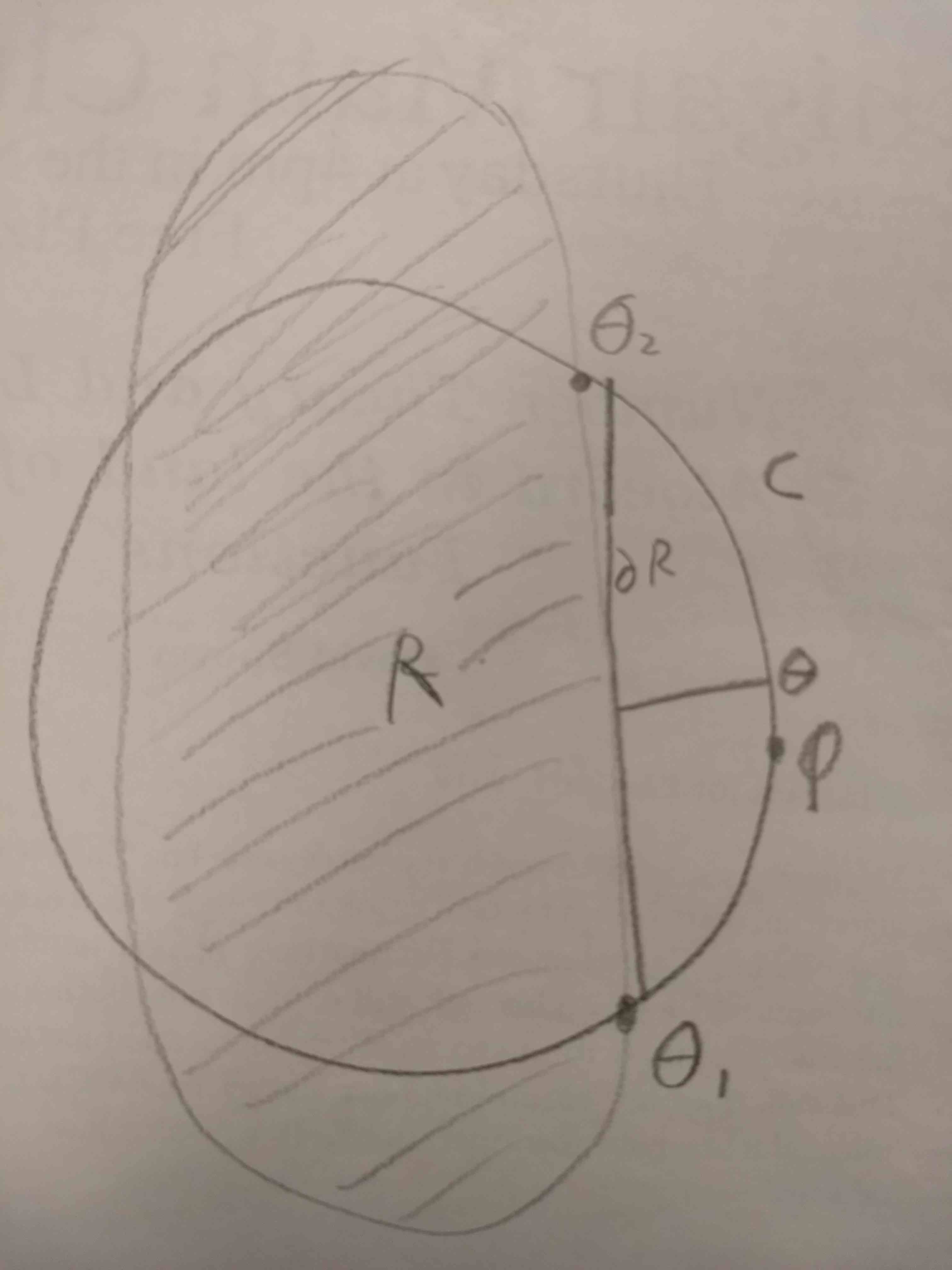Here is a proof that the answer is "no", building on Deanne Yang's excellent idea to use the support function. This function $h(\theta)$ is defined as $h(\theta) = \mathrm{sup}_{(x,y) \in R} ((\cos \theta) x + (\sin \theta) y)$.
Let our hypothetical unit circle $C$ be centered at the origin. If $\partial R$ met $C$ more than twice, then there would be at least two arcs of $\partial R$ that pass through the interior of $C$, and therefore at least one of these arcs would meet $C$ at points which are less than $\pi$ apart. We will show that this cannot happen. Suppose, to the contrary, that $\partial R$ meets $C$ at angles $\theta_1 < \theta_2 < \theta_1 + \pi$, with $R$ on the other sides of $\partial R$ from the arc between these points. The image below depicts the hypothetical positions of $R$, $C$, $\theta_1$ and $\theta_2$:
Any curve with a flex has radius of curvature $\infty$ at the flex, so $\partial R$ has no flexes and thus $R$ is convex. (This follows from a theorem of Tietze that I learned about here.)
Choose $\phi$ in the interval $(\theta_1, \theta_2)$. Since $R$ is convex, some supporting hyperplane $(\cos \theta) x + (\sin \theta) y = h(\theta)$ separates $R$ from $(\cos \phi, \sin \phi)$. As shown in the image above, $\theta$ is the midpoint of the arc subtended by this separating hyperplane, and so $\theta \in (\theta_1, \theta_2)$. We deduce that, for this $\theta$, we have $h(\theta) < (\cos \theta) (\cos \phi) + (\sin \theta) (\sin \phi) = \cos (\theta - \phi) \leq 1$.
On the other hand, $h(\theta_1) \geq (\cos \theta_1) (\cos \theta_1) + (\sin \theta_1) (\sin \theta_2) = 1$, and similarly for $\theta_2$. So $h>1$ at the endpoints of $(\theta_1, \theta_2)$ and drops to $<1$ somewhere in the interior.
Deanne tells us that $h+h''$ is the radius of curvature, so we have $h+h'' < 1$. Putting $f=h-1$, we have the following situation: $f+f''<1$, $f(\theta_1)>0$, $f(\theta)<0$ and $f(\theta_2)>0$, and $\theta_1 < \theta < \theta_2 < \theta_1+\pi$.
Noam Elkies's answer shows that this is impossible.

